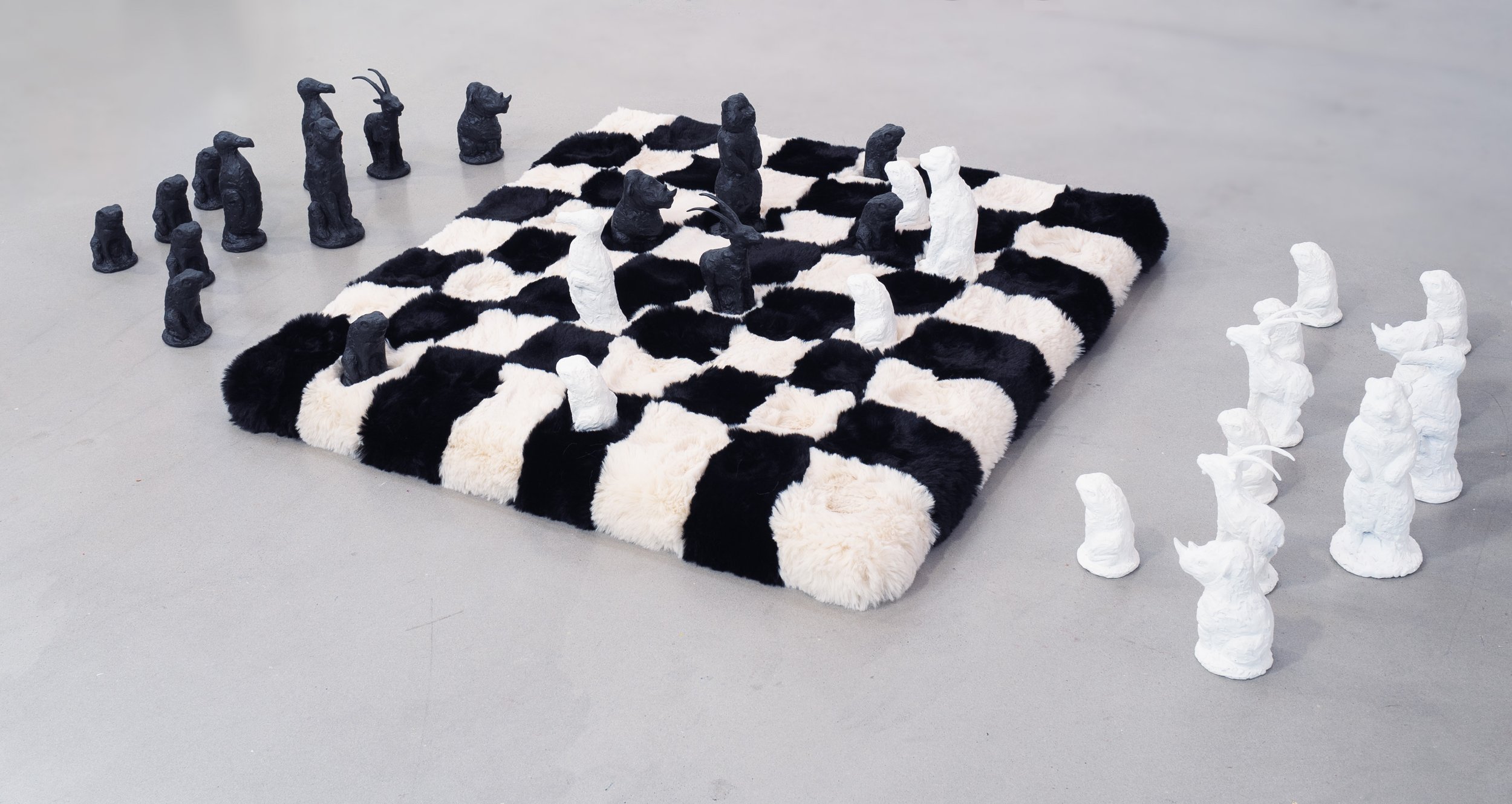R.I.P. 2013-ongoing series
R.I.P., Faux Fur, Patinaed Bronze, 11” x 32” x 32”, 2022 (The first iteration of this interactive sculpture was created in 2014)
The game of chess, originally conceived during the 6th century C.E., has survived and evolved for nearly 1500 years, an enduring artifact of strategy, competition, and domination. The game of chess has long been admired as a bastion of logic and order, but it is, at its core, a game of war, predicated on machinations of violence and obliteration. Capturing this irony as an emblem of the Anthropocene, the work re-envisions the game in R.I.P. (Rest In Peace) in which the chessman are depicted as sculptures of six animals recently extinct. Positioned on an oversized, chess board made of faux fur and wood, the pieces depict the extinct animals cast in patinaed bronze, one set is a black patina and the other white. The animals are presented with regal dignity and personality. Each sculpture has material weight and nobility.
Considered the first casualty of Anthropocene expansion, the Great Auk appears as the bishop. The last known egg of the species was destroyed in 1844, crushed underfoot by Icelandic sailors in their rush to capture its parents. The Pyrenean Ibex, the knight, extinct by 2000 was cloned in 2003, an incarnation that lived for only a few minutes. A small army of intently forward-looking frogs serve as pawns and in a reference to the extinction of half the world’s amphibians, comprise half the pieces on the board. The West African Black Rhinoceros, poached to extinction for its horn believed to be an aphrodisiac, stands as the rook. A majestic Cape Lioness, her expression bent in a defiant and cranky snarl, appears as the queen. The Mexican Brown Bear, following the extinction of six other bear species, was decimated by farmers who considered them a pest, serves as the king.
Chess is a game of triumph, but triumph is a corollary of conquest. It is, notably, a game the Buddha refused to play. The game’s colonial history—traceable from ancient India to the Muslim world to imperial civilizations in Europe and northern Asia—coupled with an emphasis on dominance, finds fresh implications in the contemporary subjugation of the natural world. Even the historical styles of chess—Romantic, Scientific, Hypermodern, and New Dynamism—alludes to shifting cultural values and power structures, concluding, perhaps, with the game’s association with technology and artificial intelligence.
Chess has long held a place of fascination for artists, Matisse, Man Ray, Duchamp, Paul Klee, Tracey Emin, Damien Hirst and Rachel Whiteread, have all engaged with the game of chess. Jake and Dinos Chapman in their 2003, Chess Set, give resonant form to pre-adolescent male obsessions with fantasy forms of conflict, violence and mutation. Chess players themselves, the brothers see the game as an intersection of warfare and play, linked to the fears and anxieties of childhood.
Engaging in this legacy, a familiar form is uniquely repurposed to compelling ends. In its prescient entanglements of order and chaos, civility and savagery, R.I.P. presses past a playful exploration of anthro-ecological history and evades purely dogmatic, observational, or elegiac orientations. The viewer becomes a player, autonomous yet complicit: a participant in the Anthropocene, at once a witness and contributor to a legacy of humanity, immortalization, and extinction.







